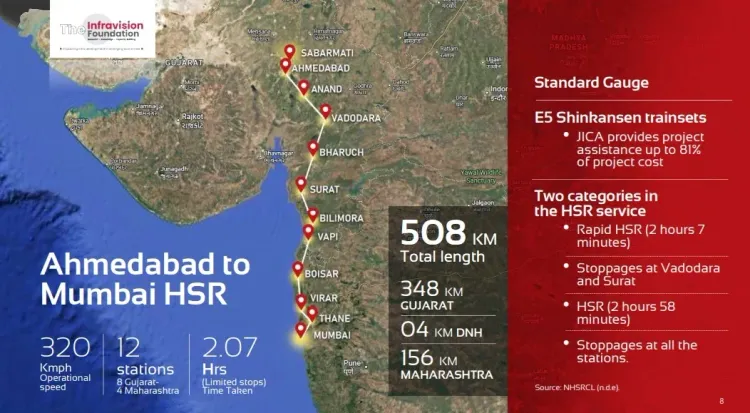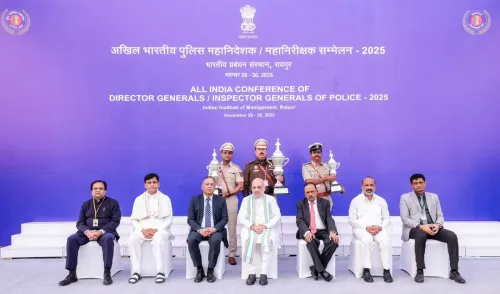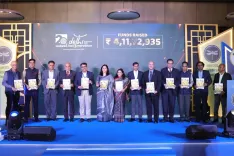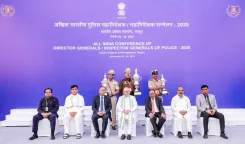Is High Speed Rail the Next Growth Multiplier with a Potential Rs 12 Lakh Crore Investment?

Synopsis
Key Takeaways
- HSR represents a major economic stimulus.
- Promotes sustainable mobility in urban areas.
- Facilitates travel to underserved regions.
- Encourages state government collaboration.
- Indigenisation will reduce project costs.
New Delhi, Aug 19 (NationPress) The High Speed Rail (HSR) initiative transcends mere speed; it seeks to redefine India’s mobility and economic landscape as we move towards ‘Viksit Bharat’ by 2047. A recent report indicates a staggering potential investment of Rs 12 lakh crore.
The concept of HSR as the catalyst for a new developmental era was the focal point of a high-level roundtable organized by The Infravision Foundation (TIF) in partnership with the Confederation of Indian Industries’ Rail Transportation and Equipment Division (CII-RTED).
This substantial investment is anticipated to serve as a multi-year economic stimulus, yielding significant secondary and tertiary benefits as demand grows and expenditures are distributed over time, according to the report.
Every kilometre of HSR can deliver nearly five times the capacity of traditional rail when usage exceeds 90%, while also decreasing reliance on fossil fuels and markedly reducing travel durations.
HSR facilitates travel access for intermediate towns lacking air service, alleviates congestion, promotes indigenisation, enhances economic competitiveness, and guarantees sustainable mobility in a swiftly urbanizing nation.
With aspirations of becoming a developed economy by 2047, HSR is now recognized as an essential element rather than a luxury, the report highlights.
The event also featured the unveiling and discussion of TIF’s latest research paper, "The Case for Developing High-Speed Rail Corridors in India", authored by Dr. Ramakrishnan T.S., which makes a strong argument for advancing HSR as a transformative intercity transport solution in India, linking it to a unified multi-modal urban transport system.
The study prioritizes four key HSR corridors slated for development between 2025 and 2035: Delhi-Sonipat-Panipat-Karnal-Ambala-Chandigarh-Ludhiana-Jalandhar (566 km); Delhi-Rewari-Jaipur-Ajmer-Jodhpur-Pali/Beenja-Palanpur-Mehsana-GandhiNagar-Ahmedabad (876 km); Delhi-Agra-Lucknow-Ayodhya-Varanasi-Patna-Kolkata (1,670 km); and Mumbai-Navi Mumbai-Pune-Satara-Kolhapur-Belagavi-Dharwad-Davengere-Tumkuru-Bengaluru-Tirupati-Chennai (1,366 km).
Participants at the roundtable observed that, similar to the introduction of the Rajdhani Express in 1969, HSR may initially seem exclusive but will eventually become essential for modern, urbanizing India, particularly as countries like Japan advance towards 500 km/h trains.
A strong consensus emerged that state governments should be involved from the outset as co-owners and financiers of corridors and stations, rather than placing the entire burden on the Union government.
As TIF Founder and Managing Trustee Vinayak Chatterjee stated, "A country aiming to be the third-largest economy globally must learn to travel with speed and comfort."
"Making HSR development a national priority is crucial," emphasized TIF CEO Jagan Shah.
The discussion also underlined the significance of indigenisation. India’s achievements in developing metro and RRTS systems were cited as a precedent for establishing a domestic HSR ecosystem, minimizing import reliance and making projects more cost-effective.
Participants advocated for phased demonstration projects at 250 km/h on shorter corridors to build confidence and showcase comprehensive domestic capabilities before scaling up further.
This event reinforced that HSR is not merely about speed; it represents a fundamental rethinking of India’s mobility and economic geography, paving the way for Viksit Bharat 2047.









